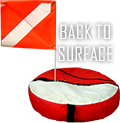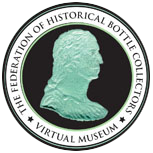Why Your Wisconsin Antique Bottle is THAT Color
Early glass derived its color from impurities present when the glass was formed. For example, 'black bottle glass' was a dark brown or green glass, first produced in 17th Century England. Black bottle glass was dark due to the effects of the iron impurities in the sand used to make the glass and the sulfur from the smoke of the burning coal used to melt the glass. While there are a number of Black glass Wisconsin antique bottles one perfect example of a black glass Wisconsin bottle is the legendary Blossoms Badger Ale.
In addition to natural impurities, glass is colored by purposely introducing minerals or purified metal salts (pigments). Examples of popular colored glasses include ruby glass (invented in 1679, using gold chloride) and uranium glass (invented in the 1830s, glass that glows in the dark, made using uranium oxide). I can only think of one antique Wisconsin bottle with an exceptionally red tint. That being Dale Smart's Borchert quart beer from Milwaukee. As for uranium glass Wisconsin unfortunately has no known examples. Imagine having a backlit shelves by simply putting your uranium.
Sometimes it is necessary to remove unwanted color caused by impurities to make clear glass or to prepare it for coloring. Decolorizers are used to precipitate out iron and sulfur compounds. Manganese dioxide and cerium oxide are common decolorizers.
Special Effects
Many special effects can be applied to glass to affect its color and overall appearance. Iridescent glass, sometimes called iris glass, is made by adding metallic compounds to the glass or by spraying the surface with stannous chloride or lead chloride and reheating it in a reducing atmosphere. Ancient glasses appear iridescent from the reflection of light off of many layers of weathering.
Diachronic glass is an iridescent effect in which the glass appears to be different colors, depending on the angle from which it is viewed. This effect is caused by applying very thin layers of colloidal metals (e.g., gold or silver) to the glass. The thin layers are usually coated with clear glass to protect them from wear or oxidation.
Glass Pigments |
|
| Compounds | Colors |
| iron oxides | greens, browns |
| manganese oxides | deep amber, amethyst, de-colorizer |
| cobalt oxide | deep blue |
| gold chloride | ruby red |
| selenium compounds | reds |
| carbon oxides | amber/brown |
| mix of manganese, cobalt, iron | black |
| antimony oxides | white |
| uranium oxides | yellow green (glows!) |
| sulfur compounds | amber/brown |
| copper compounds | light blue, red |
| tin compounds | white |
| lead with antimony | yellow |
- opaque whiteness: calcined tin (putty), calcined antimony, arsenic, calcined horns or bones and sometimes common salt.
- red: gold, iron, copper, magnesia or antimony.
- blue: zaffer (impure oxide of cobalt) and copper.
- yellow: silver, iron, antimony and magnesia with tartar.
- greens: copper, Bohemian granite and those that will produce yellow and blue.
- purple: such as will produce red and blue.
- orange: antimony, and all those which will produce red and yellow.
- black: Zaffer, magnesia, copper and iron in various combinations.








